How to Manage Queues and Reduce Max Waiting Time
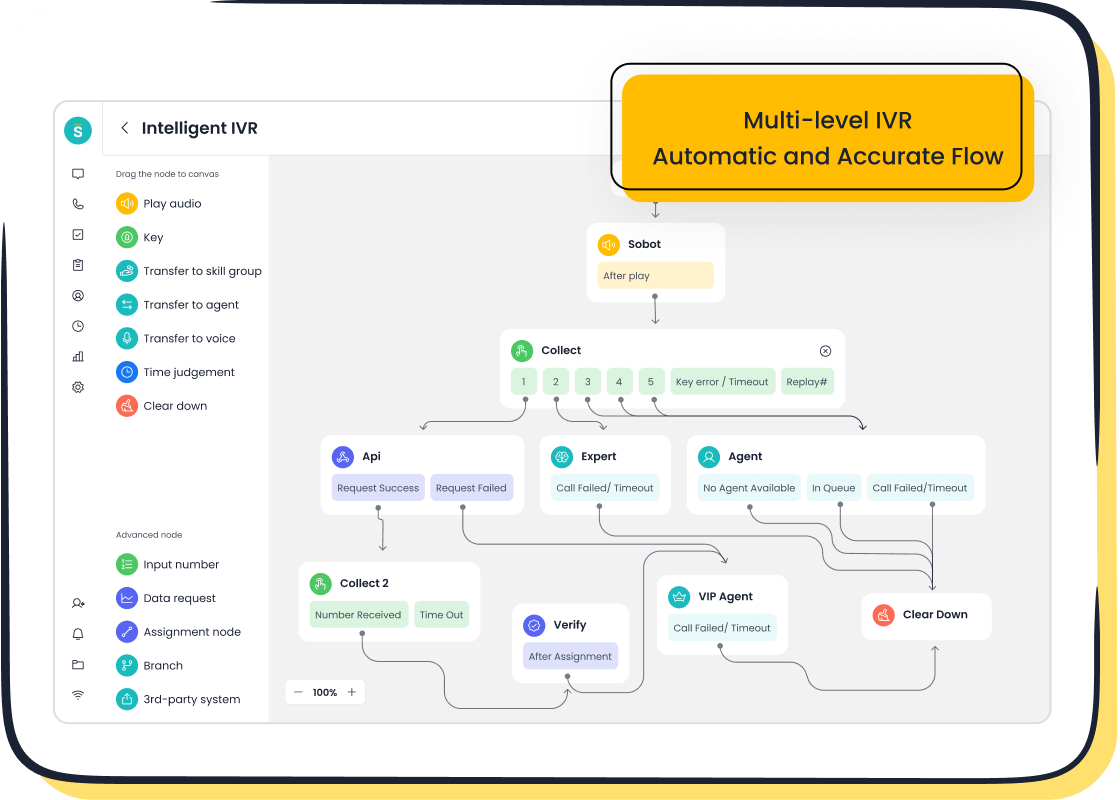
Max waiting time (MWT) refers to the longest duration a customer waits before receiving service. It plays a crucial role in shaping customer experiences. Studies show that reducing MWT directly boosts satisfaction. For instance:
- Shorter waiting times consistently correlate with higher customer satisfaction.
- Managing customer perceptions of waiting time enhances their experience, even if service duration remains unchanged.
- Improved waiting times yield significant satisfaction gains, especially when customers cannot sample services beforehand.
Operational efficiency also improves when MWT decreases. Metrics like average waiting time and call abandonment rate help identify inefficiencies. Tools like Sobot's Voice/Call Center simplify queue management by offering features such as smart call routing and real-time monitoring. These solutions ensure faster service delivery, enhancing both customer satisfaction and business performance.
How to Calculate Max Waiting Time (MWT)
Understanding the Formula for MWT
Key components: arrival rate, service rate, and queue length.
To calculate Max Waiting Time (MWT), you need to understand three key components: arrival rate, service rate, and queue length. The arrival rate refers to how often customers enter the queue, while the service rate measures how quickly they are served. Queue length represents the number of customers waiting at any given time. These factors form the foundation of waiting time calculation.
Example formula: MWT = (Queue Length ÷ Service Rate) + Average Service Time.
The formula for MWT combines these components. For example, if a queue has 10 customers, a service rate of 2 customers per minute, and an average service time of 3 minutes, the MWT would be:
MWT = (10 ÷ 2) + 3 = 8 minutes
This formula helps you estimate the longest waiting time a customer might experience.
Tools to Measure Queue Performance
Manual calculations for small-scale operations.
For small businesses, manual calculations can suffice. You can track the total waiting time and divide it by the number of customers served to find the average wait time. This approach works well when the queue size and customer flow are manageable.
Advanced tools like Sobot's Voice/Call Center for real-time monitoring.

Larger operations benefit from advanced tools like Sobot's Voice/Call Center. This platform offers real-time monitoring and analytics, allowing you to measure queue performance accurately. Features like smart call routing and AI-powered insights help reduce waiting times and improve customer satisfaction. By using these tools, you can optimize resource allocation and enhance service efficiency.
Applications of MWT Calculation
Call centers and customer service desks.
In call centers, calculating MWT helps improve agent performance and reduce call abandonment rates. For example, tracking average wait time allows you to adjust staffing levels during peak hours, ensuring customers receive timely assistance.
Retail stores, healthcare facilities, and other industries.
MWT calculations also apply to retail and healthcare. In retail, shorter waiting times lead to higher customer satisfaction and increased sales. In healthcare, managing waiting times improves patient experiences and operational efficiency. For instance, a healthcare call center might use average wait time to allocate resources effectively, reducing patient frustration.
Factors That Influence Max Waiting Time
Queue Discipline and Customer Behavior
First-come, first-served vs. priority-based systems.
Queue discipline plays a critical role in determining how long customers wait. A first-come, first-served (FIFO) system ensures fairness by serving customers in the order they arrive. However, priority-based systems, such as those used in healthcare or VIP services, prioritize certain individuals over others. This approach can reduce waiting times for high-priority customers but may increase them for others. For example, a hospital might prioritize emergency cases, leading to longer waits for non-urgent patients. Studies show that queue discipline directly impacts customer satisfaction and waiting time management.
Impact of peak times and unpredictable arrival patterns.
Peak times and unpredictable customer arrivals significantly affect queuing. During busy periods, such as holiday shopping or lunch hours, queues grow longer, increasing MWT. Research from busy shopping areas highlights how arrival patterns influence waiting times. Statistical methods like regression analysis reveal that managing peak times effectively can enhance customer satisfaction. Tools like Sobot's Voice/Call Center help you monitor these patterns in real time, enabling better resource allocation and reduced waiting times.
Service Mechanisms and Staffing
Single-server vs. multi-server systems.

The type of service mechanism impacts queue performance. Single-server systems, where one agent handles all customers, often result in longer queues. Multi-server systems distribute the workload among multiple agents, reducing waiting times. For instance, a call center with multiple agents can handle higher call volumes efficiently. Sobot's Voice/Call Center supports multi-server setups with features like smart call routing, ensuring faster service delivery and improved queue performance.
Optimizing staff allocation to reduce bottlenecks.
Staffing levels directly influence queuing efficiency. Insufficient staff during peak hours creates bottlenecks, increasing MWT. Conversely, overstaffing during off-peak hours wastes resources. By analyzing historical data, you can adjust staffing levels to match demand. Sobot's real-time monitoring tools provide insights into customer flow, helping you allocate staff effectively and improve queue performance.
Technology and Queue Management Systems
Role of digital tools like Sobot's queue management system.
Digital tools revolutionize queuing by providing real-time data and predictive analytics. Sobot's queue management system collects extensive data on customer flow and service times, enabling you to optimize operations. For example, branch managers can monitor queues and respond quickly to unexpected delays. These tools also predict waiting times, helping you manage customer expectations and reduce perceived wait times.
Real-time updates and predictive analytics.
Real-time updates improve queue performance by allowing immediate adjustments. Predictive analytics, powered by AI, forecast demand and optimize resource allocation. Sobot's Voice/Call Center uses these technologies to streamline operations and lower MWT. By leveraging these tools, you can enhance customer satisfaction and operational efficiency.
Strategies to Reduce Max Waiting Time

Optimize Staffing and Resource Allocation
Adjust staffing levels based on peak and off-peak hours.
Staffing levels directly impact how efficiently you manage your queue. During peak hours, flexible scheduling ensures enough agents are available to handle increased demand. For example, call centers that adjust staffing during busy periods significantly reduce wait times. This approach prevents understaffing, which often leads to customer dissatisfaction. By analyzing historical data, you can identify peak times and allocate resources accordingly. This strategy not only improves service efficiency but also enhances customer satisfaction.
Use Sobot's Voice/Call Center for smart call routing and task automation.
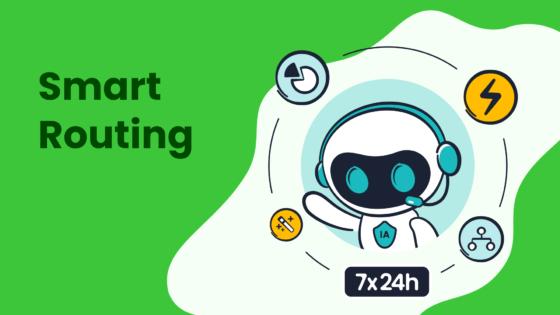
Sobot's Voice/Call Center simplifies resource allocation with features like smart call routing and task automation. Smart call routing directs customers to the most suitable agent, reducing unnecessary transfers and wait times. Task automation handles repetitive processes, allowing agents to focus on complex issues. These tools ensure your queue operates smoothly, even during high-demand periods. With real-time monitoring, you can make immediate adjustments to staffing and service delivery, further optimizing your operations.
| Strategy | Impact on Max Waiting Time |
|---|---|
| Staff Training | Reduces service time and improves customer experience |
| Optimizing Staffing Levels | Balances employee availability, minimizing wait times |
| Modifying Service Delivery Systems | Enhances perceived waiting time, improving customer satisfaction |
| Empowering Call Center Agents | Increases efficiency in handling calls, reducing wait times |
Implement Predictive Analytics and AI
Leverage historical data to forecast demand.
Historical data provides valuable insights into customer flow and service demand. By analyzing this data, you can predict busy periods and prepare accordingly. For instance, predictive waiting time calculations help you allocate resources effectively, reducing uncertainty for customers. Businesses that use predictive analytics often experience lower customer churn rates and higher satisfaction levels. This proactive approach ensures your queue management system operates efficiently.
Use AI-powered tools for real-time adjustments.
AI-powered tools enhance your ability to manage queues dynamically. These tools analyze real-time data to adjust staffing and service delivery instantly. For example, AI solutions can handle multiple customer interactions simultaneously, significantly reducing wait times. Predictive waiting time calculations also improve customer experiences by minimizing stress associated with delays. Sobot's Voice/Call Center integrates AI to streamline operations, ensuring your queue remains efficient and customer-focused.
- Nearly 70% of consumers prefer appointment scheduling systems, which help manage customer flow and reduce wait times.
- Virtual queues allow customers to use their waiting time productively, improving their overall experience.
- AI solutions enable businesses to manage multiple customer interactions simultaneously, significantly reducing wait times.
- Predictive waiting time calculations enhance customer experience by reducing uncertainty and stress associated with waiting.
Use a Queue Management System
Benefits of virtual queues and appointment scheduling.
Virtual queues and appointment scheduling transform how you manage customer flow. These systems allow customers to wait remotely, reducing physical congestion and improving their experience. For example, virtual queues let customers use their time productively, whether shopping or relaxing. Appointment scheduling ensures customers receive timely service, minimizing frustration. These tools also reduce staff workload by automating queue management, allowing employees to focus on core tasks.
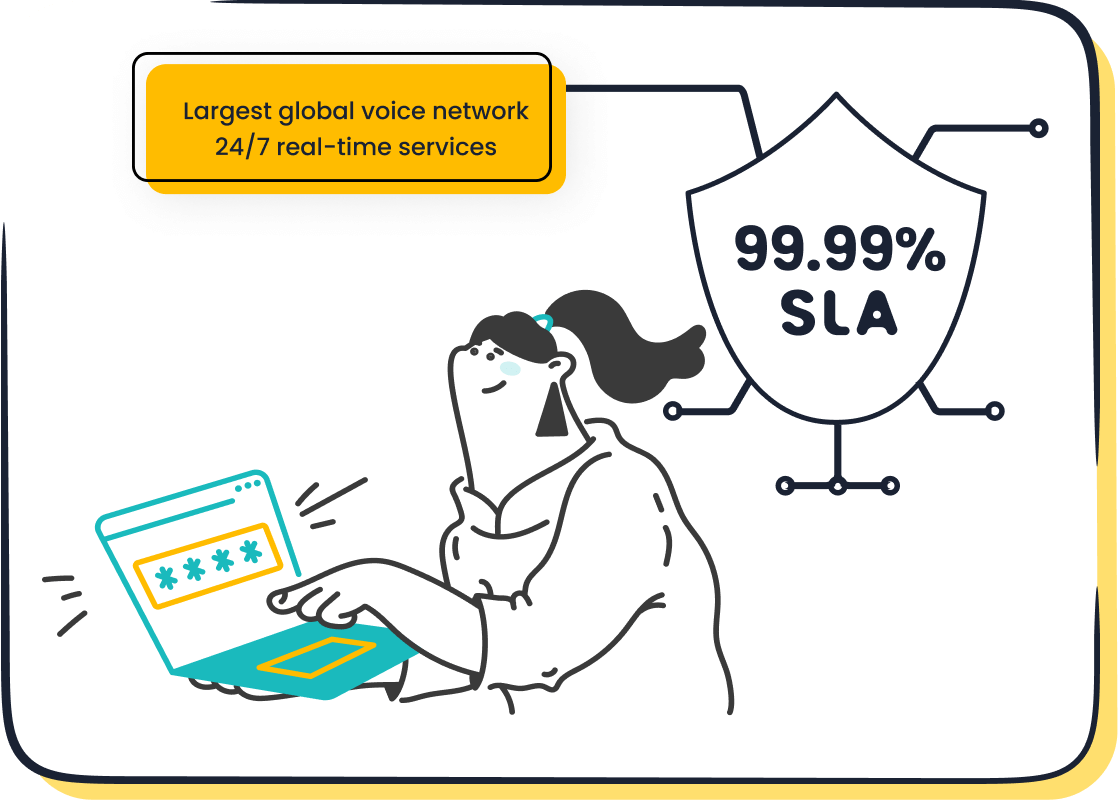
How Sobot's solutions enhance queue management efficiency.
Sobot's queue management system combines real-time monitoring and predictive analytics to optimize operations. Automation features streamline customer flow, while predictive waiting time calculations improve resource planning. For example, Sobot's system logs customer data to forecast busy periods accurately. This capability minimizes bottlenecks and enhances service efficiency. By integrating Sobot's solutions, you can ensure your queue operates seamlessly, delivering a superior customer experience.
- Automation of customer flow through virtual queuing allows customers to wait anywhere, improving their experience and reducing physical line congestion.
- Real-time performance monitoring and predictive wait time analysis help in resource planning, which minimizes bottlenecks and enhances overall service efficiency.
Streamline Service Processes
Automate repetitive tasks to speed up service.
Automation plays a vital role in reducing service delays. By automating repetitive tasks, you free up staff to focus on more complex customer needs. For example, in healthcare, automating appointment scheduling reduces unnecessary waiting periods and improves patient flow. Similarly, call centers benefit from automated call routing, which ensures customers connect with the right agent quickly.

Sobot's Voice/Call Center offers automation features like bulk outbound tasks and AI-powered Voicebots. These tools handle routine processes, such as call tracking and data entry, allowing agents to concentrate on resolving customer issues. This approach not only accelerates service delivery but also enhances customer satisfaction.
Tip: Automating tasks can significantly improve average wait time, especially during peak hours. Businesses that adopt automation often report higher efficiency and reduced operational costs.
Simplify workflows to reduce bottlenecks.
Complex workflows often create bottlenecks that slow down service delivery. Simplifying these processes ensures smoother operations and faster service. For instance, integrating systems for better workflow management eliminates redundant steps, saving time and resources.
Sobot's unified workspace simplifies workflows by consolidating customer data, call logs, and communication channels into one platform. This integration reduces the need for manual data retrieval, enabling agents to respond to customer inquiries more efficiently.
| Measurable Effect | Description |
|---|---|
| Reduced Costs | Streamlining operations helps businesses reduce costs by eliminating inefficiencies. |
| Increased Efficiency | Organizations can improve productivity and service delivery by optimizing processes. |
| Enhanced Customer Satisfaction | Faster service delivery leads to improved customer experiences and loyalty. |
By eliminating bottlenecks, you can accelerate service delivery and improve customer satisfaction. For example, businesses that streamline workflows often experience fewer delays and higher throughput, making their operations more efficient.
Benefits of Reducing Max Waiting Time
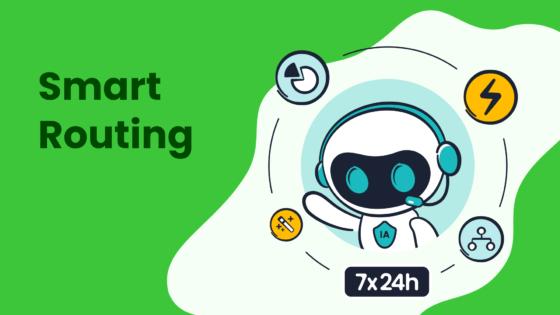
Enhanced Customer Satisfaction
Improved customer experience and loyalty.
Reducing waiting times directly enhances the customer experience. When customers spend less time waiting, they feel valued and appreciated. For example, First Direct reduced its average call waiting time to just 39 seconds, far below the industry average of over eight minutes. This improvement significantly boosted customer satisfaction and strengthened their reputation for exceptional service. Shorter waiting times also encourage loyalty, as customers are more likely to return to businesses that prioritize their time.
| Evidence Description | Impact on Customer Satisfaction |
|---|---|
| Reducing customers’ perception of waiting time through various strategies | Increases consumer satisfaction |
| Enhancing the waiting environment with entertainment or food services | Reduces customer complaints and enhances satisfaction |
| First Direct's reduction in call waiting times to 39 seconds | Significantly improved customer satisfaction and reputation in the banking industry |
Reduced frustration and abandonment rates.
Long waiting times often lead to frustration and abandoned interactions. Customers may leave before receiving service, resulting in lost opportunities. By minimizing waiting times, you can reduce abandonment rates and improve overall satisfaction. For instance, businesses that implement queue management systems like Sobot's Voice/Call Center often see fewer abandoned calls and happier customers. These tools streamline operations, ensuring customers receive timely assistance.

Increased Operational Efficiency
Better resource utilization and reduced idle time.
Efficient queue management ensures your resources are used effectively. When waiting times decrease, staff spend less time idle and more time assisting customers. This improves productivity and reduces wasted resources. Sobot's real-time monitoring tools help you allocate staff based on demand, ensuring optimal efficiency. For example, during peak hours, you can adjust staffing levels to handle higher volumes, reducing bottlenecks and improving service delivery.
Faster service delivery and higher throughput.
Shorter waiting times lead to faster service delivery. This allows you to serve more customers in less time, increasing throughput. Businesses that adopt advanced queue management systems often experience smoother operations and higher customer satisfaction. Sobot's solutions, such as smart call routing, ensure customers connect with the right agent quickly, enhancing their experience and boosting operational efficiency.
Cost Savings and Business Growth
Lower labor costs through optimized staffing.
Reducing waiting times can lower labor costs by optimizing staffing levels. With tools like Sobot's Voice/Call Center, you can analyze historical data to predict demand and schedule staff accordingly. This prevents overstaffing during slow periods and understaffing during busy times. By aligning resources with demand, you save on labor costs while maintaining high service standards.
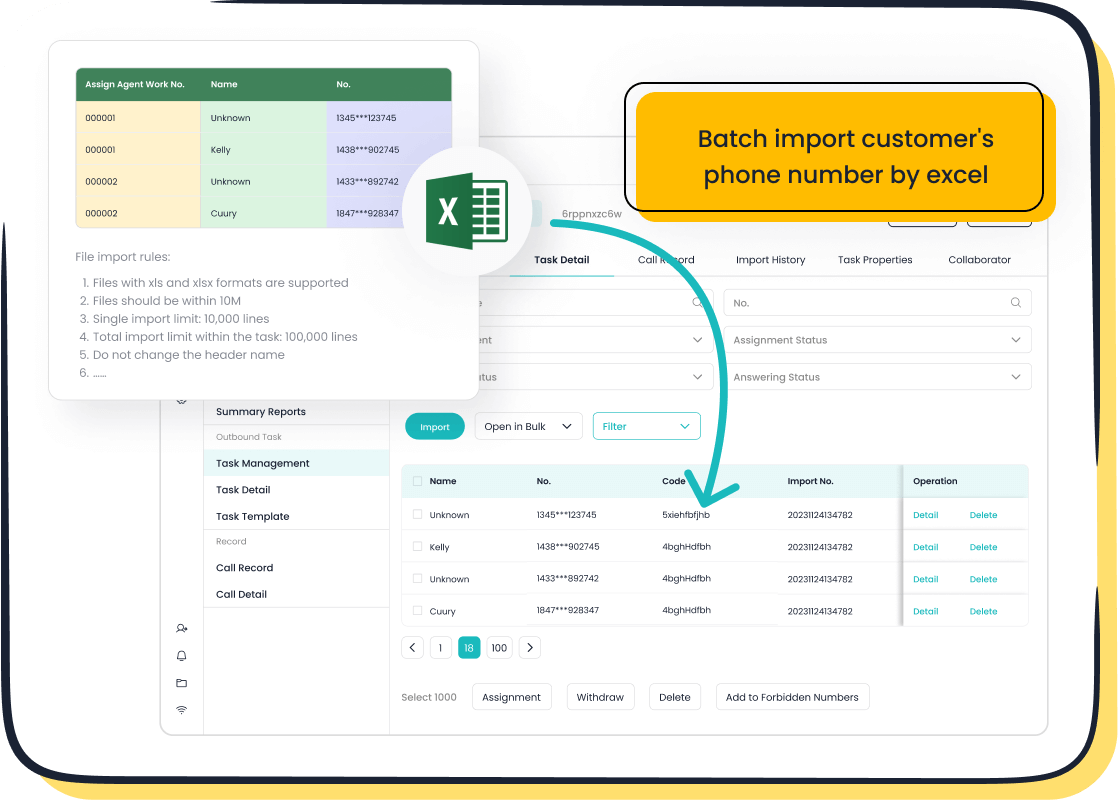
Long-term benefits of proactive queue management.
Proactively managing queues delivers long-term benefits. Businesses that prioritize reducing waiting times often see increased customer loyalty, higher satisfaction rates, and sustained growth. For example, First Direct's focus on reducing call waiting times not only improved customer satisfaction but also reinforced their reputation as a leader in customer service. Sobot's queue management solutions provide the tools you need to achieve similar results, helping you build a loyal customer base and drive business success.
Why Sobot's Queue Management Solutions Matter
Competitive Advantage with Sobot
Stand out by offering superior customer service.
Sobot's queue management solutions empower businesses to deliver exceptional customer service. By leveraging tools like virtual queues and real-time monitoring, you can reduce waiting times and improve customer experiences. Studies reveal that 52% of consumers prefer virtual queues over traditional ones, highlighting the demand for modern solutions. Additionally, over 75% of customers reported waiting in physical lines during their last experience, showcasing the opportunity to modernize your operations.
With Sobot's advanced features, such as smart call routing and AI-powered insights, you can streamline service delivery and meet customer expectations. These tools not only enhance efficiency but also create a seamless experience that sets your business apart.
Build a reputation for efficiency and reliability.
Superior queue management directly impacts your business reputation. Sobot's solutions ensure faster service delivery, which boosts customer satisfaction and loyalty. The following table illustrates how Sobot's tools enhance service quality and reliability:
| Metric | Value |
|---|---|
| Correct answers | Over 80% |
| Customer satisfaction | Over 95% |
| Self-answered questions | 22.2% |
| CSAT score | 97% |
| Problems solved | 85% |
| Customer happiness | 99% |
| Sign-off rate increase | About 35% |
| COD collection rate increase | About 40% |
These metrics demonstrate how Sobot's solutions foster trust and reliability, helping you build a strong reputation in your industry.
Long-Term Business Growth with Sobot
Retain customers and attract new ones.
Sobot's queue management tools play a crucial role in customer retention and acquisition. By reducing waiting times and improving service efficiency, you can create a positive experience that keeps customers coming back. For example, businesses using Sobot's solutions have seen a 20% reduction in inbound discussion volume, indicating improved self-service capabilities. Positive feedback rates have also increased to over 96%, reflecting high satisfaction levels.
Foster a culture of continuous improvement with Sobot's tools.
Sobot's solutions enable you to adapt and grow by providing actionable insights through real-time data and predictive analytics. The chart below highlights key metrics that correlate with long-term growth and retention:

By integrating Sobot's tools, you can solve 85% of customer problems efficiently, achieve a CSAT score of 97%, and increase sign-off rates by 35%. These improvements not only enhance customer loyalty but also drive sustainable business growth.
Understanding and calculating Max Waiting Time (MWT) is essential for improving customer satisfaction and operational efficiency. By analyzing key metrics like queue length and service rate, you can identify bottlenecks and optimize your processes. Reducing MWT through strategies like staff optimization, predictive analytics, and digital tools ensures smoother operations and happier customers.
Sobot's Voice/Call Center and queue management solutions provide the tools you need to achieve these goals. Features like smart call routing, real-time monitoring, and virtual queues streamline service delivery. These tools also enhance customer experiences by reducing frustration and abandonment rates.
| Benefit | Description |
|---|---|
| Customer Satisfaction | Quicker assistance leads to higher satisfaction levels and reduced frustration. |
| Operational Efficiency | Streamlined call handling processes enhance overall effectiveness. |
| Brand Reputation | Prompt service contributes to a positive brand image, highlighting reliability and responsiveness. |
| Agent Job Satisfaction | Shorter queues reduce stress on agents, boosting their job satisfaction and performance. |
| Customer Experience | Lower abandonment rates and higher completion rates improve the overall customer experience. |
Adopting Sobot's solutions not only improves queue management but also fosters long-term business growth. By leveraging advanced tools, you can reduce waiting times, enhance customer loyalty, and build a reputation for reliability.
FAQ
What is the difference between average and max waiting time?
Average waiting time refers to the typical duration customers wait before receiving service. Max waiting time, on the other hand, is the longest duration any customer waits. Both metrics help you evaluate queue performance, but max waiting time highlights extreme delays that need attention.
How can you calculate the expected waiting time for customers?
You can calculate the expected waiting time by analyzing queue length, service rate, and arrival rate. Tools like Sobot's Voice/Call Center simplify this process with real-time data and predictive analytics, ensuring accurate estimations and better queue management.
Why does customer waiting time vary during peak hours?
Customer waiting time increases during peak hours due to higher demand and limited resources. By using tools like Sobot's smart call routing, you can allocate staff efficiently and reduce delays, even during busy periods.
How does an estimated wait time improve customer satisfaction?
Providing an estimated wait time sets clear expectations for customers. It reduces frustration and uncertainty, making the waiting experience more manageable. Sobot's queue management system offers real-time updates, ensuring customers stay informed and satisfied.
Can technology help reduce max waiting time?
Yes, technology like Sobot's Voice/Call Center can significantly reduce max waiting time. Features such as AI-powered insights, real-time monitoring, and task automation streamline operations, ensuring faster service delivery and happier customers.
See Also
Effective Strategies for Managing Live Chat Support Teams
Top Practices for Ensuring Quality in Call Centers
Enhancing Call Center Efficiency Through Effective Monitoring
Understanding the Efficiency of Call Center Automation
Essential Principles of Quality Management Systems in Call Centers
